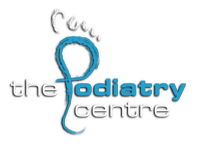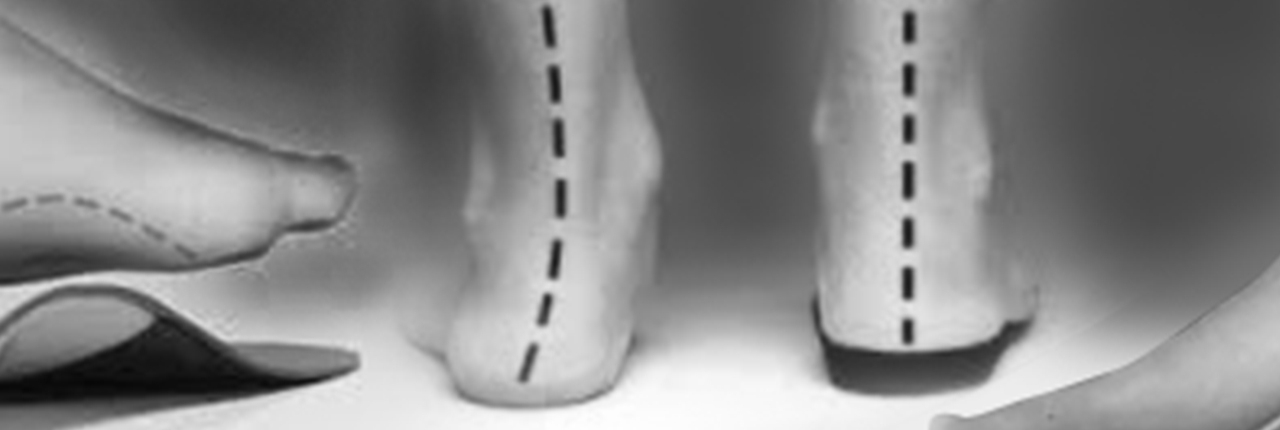Flat Feet
If you have flat feet then you should know more about the problems you can potentially develop.
If you have flat feet, your arches are low or maybe even absent. The condition is also known by the medical terms “pes planus” or “pes valgus.”
Flat feet are often associated with excessive pronation, which is the action that causes the foot’s arch to descend down and inward (flattening) as the foot strikes the ground. Pronation is a normal and necessary foot motion. Overpronation, however, means that feet pronate to an excessive degree while standing, walking or running.
You can sometimes identify overpronation in a person with flat feet by observing them from behind. You may see something called the “too-many-toes” sign, where the individual’s toes and forefeet splay outward.
Some Causes of Flat Feet
1. Normal Developmental Changes — As children grow, their legs will experience developmental changes that can result in excess flattening of the arches with weight bearing. One example is genu valgum, or knock-knees, a usually normal, temporary condition in children at different stages of growth. A tight calf muscle or Achilles tendon can also contribute to a flat foot. Many children will experience tight calf muscles as they go through growth spurts.
2. Congenital Foot Abnormalities — Conditions that are present at birth and are often diagnosed early include: metatarsus adductus, calcaneovalgus and congenital vertical talus.
3. Tarsal Coalitions — Tarsal coalitions are congenitally fused foot bones that cause a rigid flat foot often associated with painful muscle spasms. This type of flat foot is usually diagnosed later in childhood or in adulthood.
4. Loose Ligaments — Any condition that causes loose ligaments can result in a flat foot or lower-than-normal arch. Ligaments are bands of tissue that connect bones to each other and have an important role in giving form to foot arches. An example of a condition that causes loosening of ligaments is pregnancy, where normal hormonal changes relax the ligaments. Diseases that cause loose ligaments include Ehlers-Danlos syndrome, Marfan’s syndrome and rheumatoid arthritis.
5. Leg Length Inequality — If one leg is longer than the other, one foot may be flat in relation to the other to compensate.
6. Other causes of over-pronating include poor posture, weak leg and foot muscles, pre-existing structural conditions such as scoliosis, weak core stability and many others.
Problems Often Associated with Flat Feet
- Hammertoes
- Bunions
- Stress Fractures
- Shin Splints
- Arthritis of Foot Joints
- Tendonitis
- Plantar Fasciitis
When Flat Feet Require Treatment
If you have flat feet you may not necessarily need treatment — sometimes a child or even an adult will have low arches and have no problems. It’s normal for a baby’s or young child’s feet to appear flat until the structure of their feet is more fully developed.
If flat feet are contributing to secondary problems, especially leg or foot pain, treatment may be necessary. Flat feet can sometimes cause difficulty walking or running and interfere with athletic activities. A visit to a podiatrist will involve an evaluation of foot structure and function. Besides a foot exam, a visit may include foot X-rays and an analysis of your feet while walking.
Your podiatrist may prescribe arch supports or orthotics to control the pronation. While orthotics and arch supports don’t permanently correct the shape of the arch, they do help control excess pronation that may be causing wear-and-tear on your muscles and joints. Sneakers with a design called motion control are also helpful for overpronators. This style of sneaker has a design that creates more stability by limiting movement in the heel and arch area of the shoe. Additionally, physical therapy and stretching exercises may be in order, especially if tendonitis (tendon inflammation) is present.
Flat Feet
If you have flat feet, your arches are low or maybe even absent. The condition is also known by the medical terms “pes planus” or “pes valgus.”
Flat feet are often associated with excessive pronation, which is the action that causes the foot’s arch to descend down and inward (flattening) as the foot strikes the ground. Pronation is a normal and necessary foot motion. Overpronation, however, means that feet pronate to an excessive degree while standing, walking or running.
You can sometimes identify overpronation in a person with flat feet by observing them from behind. You may see something called the “too-many-toes” sign, where the individual’s toes and forefeet splay outward.
Some Causes of Flat Feet
1. Normal Developmental Changes — As children grow, their legs will experience developmental changes that can result in excess flattening of the arches with weight bearing. One example is genu valgum, or knock-knees, a usually normal, temporary condition in children at different stages of growth. A tight calf muscle or Achilles tendon can also contribute to a flat foot. Many children will experience tight calf muscles as they go through growth spurts.
2. Congenital Foot Abnormalities — Conditions that are present at birth and are often diagnosed early include: metatarsus adductus, calcaneovalgus and congenital vertical talus.
3. Tarsal Coalitions — Tarsal coalitions are congenitally fused foot bones that cause a rigid flat foot often associated with painful muscle spasms. This type of flat foot is usually diagnosed later in childhood or in adulthood.
4. Loose Ligaments — Any condition that causes loose ligaments can result in a flat foot or lower-than-normal arch. Ligaments are bands of tissue that connect bones to each other and have an important role in giving form to foot arches. An example of a condition that causes loosening of ligaments is pregnancy, where normal hormonal changes relax the ligaments. Diseases that cause loose ligaments include Ehlers-Danlos syndrome, Marfan’s syndrome and rheumatoid arthritis.
5. Leg Length Inequality — If one leg is longer than the other, one foot may be flat in relation to the other to compensate.
6. Other causes of over-pronating include poor posture, weak leg and foot muscles, pre-existing structural conditions such as scoliosis, weak core stability and many others.
Problems Often Associated with Flat Feet
- Hammertoes
- Bunions
- Stress Fractures
- Shin Splints
- Arthritis of Foot Joints
- Tendonitis
- Plantar Fasciitis
When Flat Feet Require Treatment
If you have flat feet you may not necessarily need treatment — sometimes a child or even an adult will have low arches and have no problems. It’s normal for a baby’s or young child’s feet to appear flat until the structure of their feet is more fully developed.
If flat feet are contributing to secondary problems, especially leg or foot pain, treatment may be necessary. Flat feet can sometimes cause difficulty walking or running and interfere with athletic activities. A visit to a podiatrist will involve an evaluation of foot structure and function. Besides a foot exam, a visit may include foot X-rays and an analysis of your feet while walking.
Your podiatrist may prescribe arch supports or orthotics to control the pronation. While orthotics and arch supports don’t permanently correct the shape of the arch, they do help control excess pronation that may be causing wear-and-tear on your muscles and joints. Sneakers with a design called motion control are also helpful for overpronators. This style of sneaker has a design that creates more stability by limiting movement in the heel and arch area of the shoe. Additionally, physical therapy and stretching exercises may be in order, especially if tendonitis (tendon inflammation) is present.
High Arches
When it comes to foot health, most people are aware that flat feet can be a problem foot type. When describing foot structure or type, the opposite extreme from a flat foot is the high-arched foot. A high-arched foot lacks the needed flexibility for absorbing shock and tends to roll outward or supinate, which can increase the risk of ankle sprains. Also known as a pes cavus deformity or a cavus foot type, high-arched feet can be associated with foot health issues, such as:
- Metatarsalgia (pain in the ball of the foot)
- Hammertoes
- Ankle sprains
- Pain and arthritis in the rearfoot (under the ankle)
- Calluses under the ball of the foot and outer part of the sole
- Tendonitis, often affecting the Achilles tendon, peroneal tendons near the ankle, and the iliotibial band
- Shin splints
- Stress fractures – usually affecting the tibia bone of the leg or metatarsal bones of the foot
How do you know if you have a high-arched foot? A podiatrist can evaluate your foot structure and function while you are non-weight bearing and while you walk to assess whether you have a flat foot, neutral foot, or high-arched foot. You can also get an idea of your foot type by observing the impression your feet make in wet sand or on textured paper after stepping into water. A high arched foot leaves a very thin foot print because a large part of the arch area is not contacting the ground.
High arches can make shoe comfort a challenge. A person with high arches may find that shoes which are too shallow, such as certain dress shoe styles, are uncomfortable because their feet slip out. And because high-arch feet don’t absorb shock well, hard-soled shoes or shoes with thin soles may cause foot and leg pain, especially at the knee. Another issue is nerve or tendon irritation across the top of the foot from tight shoes. Shoes with a thick but flexible sole usually feel the most comfortable on high-arched feet.
Ankle braces, arch supports, and ankle strengthening exercises can help prevent recurrent sprains that can sometimes affect those with high-arched feet. Daily stretching of the calf muscles can help resist some of the tightness that affects the Achilles tendon and can also help control heel pain.
In most cases, high-arched feet are a hereditary foot type and not a consequence of any other health condition. In some cases, though, a pes cavus deformity is secondary to congenital or neurological conditions such as, post-stroke paralysis, Charcot-Marie-Tooth disease, spina bifida, cerebral palsy, club foot, or muscular dystrophy.
For diabetics, a high-arch foot can be especially problematic because of the excess pressure that is created on the sole of the foot. This often creates callus build-up which can become a non-healing wound, putting a diabetic at an increased risk for limb amputation. The key to prevention is regular podiatric care to keep calluses trimmed and assess the need for prescription footwear and orthotics which decrease stress on the feet.



